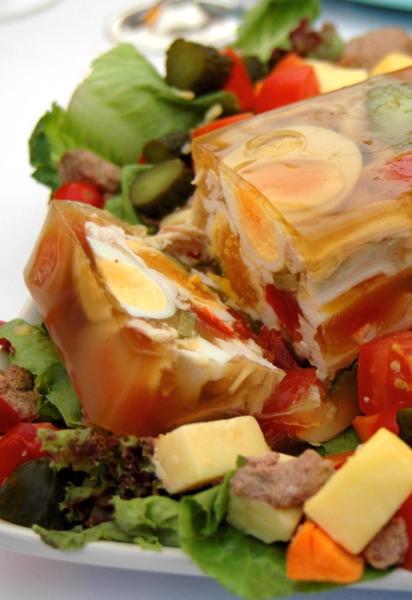- Read offline
- Access all content
- Use the in-app Map to find sites, and add custom locations (your hotel...)
- Build a list of your own favourites
- Search the contents with full-text search functionality
- ... and more!
gelée
gelatine or aspic
Gelée can mean either ‘frozen’ or ‘jelly’, as in something sweet, as in gelée anglaise (dessert gelatine or Jell-O) and gelées de fruits (jelly fruit candies), many of which are made with pectin (pectine in French).

It also means aspic, used in France at least since the Middle Ages (it appeared in the 14th-century Le Viandier, France’s oldest cookery book); the famous chef Carême invented many new flavours and colours in his chaud-froid creations.
Most people making a sweet or savoury recipe calling for gélatine use the thin leaves (gélatine alimentaire en feuilles) available in the baking section of the supermarket. There is also a powder (gélatine en cristaux or gélatine en poudre).
Vegetarians can find agar agar (made from algae) in some of the larger supermarkets or in Asian and health food shops.
Images by Anthony Georgeff, Marco Verch Professional Photographer

